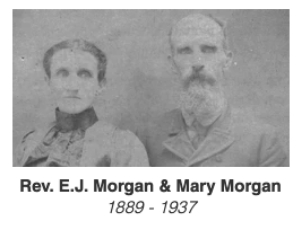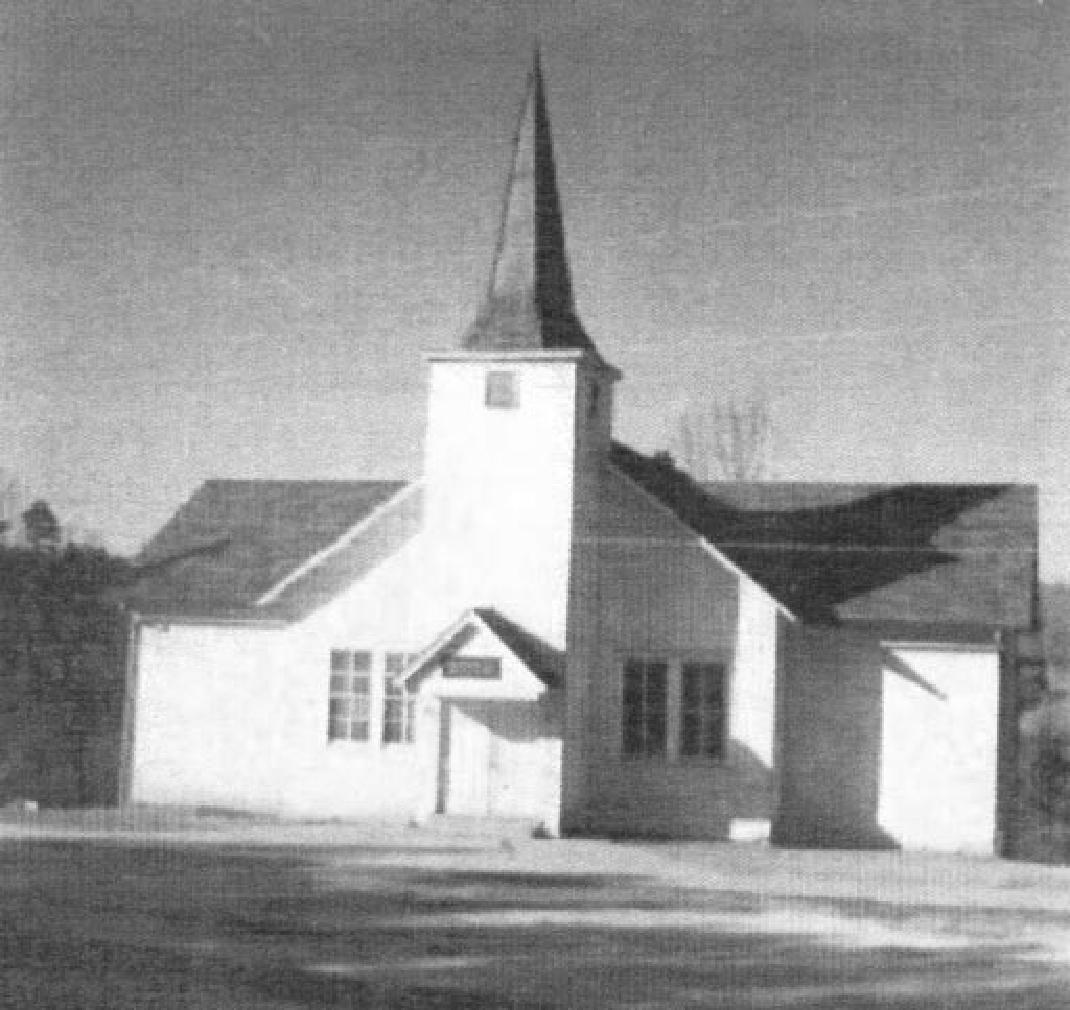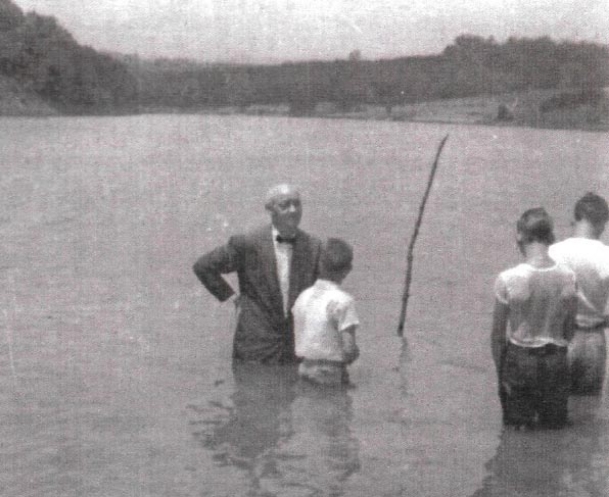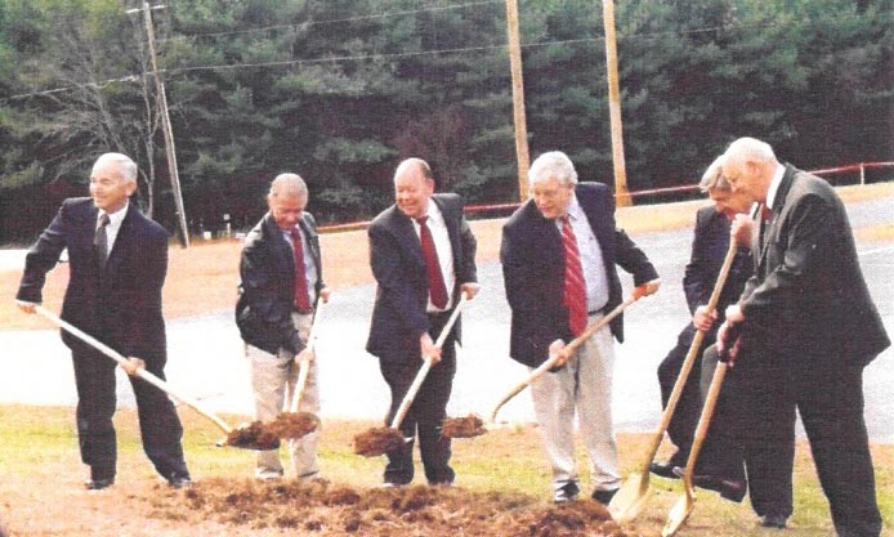Our Story
We have a rich and beautiful history
1889
In 1889, a small group of believers came together to form the New Morgan Hill Baptist Church, beginning a history that would span over 100 years. Many of the charter members came from Hominy Baptist Church and officers from Bent Creek Baptist met with the church to assist in the organization.

1911
On August 19, 1911, the church adopted the church covenant and articles of faith as laid down in Pendleton’s Church Manual as the basis of beliefs. It was voted on July 20, 1912 that New Morgan Hill should appoint delegates to the Buncombe Baptist Association. The church reported to the Association of a total membership of 30, 15 baptisms, and a pastor’s salary of $12.50 per year.

1914
In October 1914, a committee of five was “appointed to investigate the prospect of building a Baptist church house.” On November 14 of the same year, the committee reported that “we have consulted the people and find them all in favor of a Baptist church house and all seemed to be willing to help build.” In December, the church voted to build on the plot of land donated by Mrs. Hester Barkley.
1918
The original church building was built on the plot of land where the cemetery currently is today. In 1918, as the Flu Epidemic swept the country, New Morgan Hill was impacted and there were no services held from October of 1918 through January of 1919, according to the church minutes. An addition to the church in the 1920s was the purchase of a church bell for $10.00. Cordie Morgan, Annie Morgan Rutherford, and Carrie Lance walked through the community collecting donations, which ranged from $.01 to $.50 to buy it.
1927
A population increase to the area resulted because of the Enka plant, which arrived in 1927 when a Dutch company purchased over two thousand acres in Hominy Valley. The American Enka Company quickly became Buncombe County’s largest employer; New Morgan Hill was directly impacted by this influx. Minutes from an August 5 meeting in 1929 state, “Charles E. Maddery, General Secretary of State Mission Board of N.C. visited our church and purposed to supplement our pastor’s salary $600 a year provided the church raises $200. By motion the church agreed to raise the $200 and extended the call to Rev. J.C. Bennett for half time and the said pastor to give special attention to visiting the Enka Village and surrounding’s in an effort to enlist the incoming people in church activities.” In that era, many preachers would pastor more than one church at a time.
Prior to the construction of Enka Lake baptismal services were held outdoors in a dammed up creek; baptismal services were noted in the church minutes that the church “met at the waters.” Following the construction of Enka Lake, churches in the area would hold baptism services at the lake and use classrooms at the church for changing clothes. As many as 2 to 3 churches would meet at one time on Sunday afternoons for baptism -regardless of the time of year or weather conditions. Preacher Charles Sprinkle of Glady Baptist remembers a baptismal service at the lake when the weather was so cold that by the time he walked back to the church, his clothes were frozen.

1930
Another direct effect of America Enka on the church occurred in the early 1930s: “The church met in conference, July 1, 1934. By vote of the church, the proposition made by the American Enka Company for the purchase of a tract of land from the church was accepted.” Eight days later, the trustees were authorized to make a deed to American Enka for the land. On August 5, 1934, the two parties agreed that the .54 acres now belonged to America Enka for the price of three-hundred dollars.
1935
Like many during and following the Great Depression, New Morgan Hill was hit hard. The Treasurer’s report for October 1935 noted a total debt of $78.62. As a result, it was “recommended [on November 15, 1935] by the group that the entire church membership be asked to tithe for four Sundays, for the purpose of paying off the debts of the church.” At the end of the year, there were a total of 105 church members on the roll.
In the late 1930s, the church undertook a remodeling program and new pews were bought for a cost of $200. These pews are still in use in the church today in the Children’s Church room.
1943
Like many within the United States, the outbreak of World War 11 affected the members of New Morgan Hill: On Sunday, January 17, 1943, the Church voted to send literature to the boys in service. The next month, the church voted to have Rev. A.J. Buckner serve as pastor; the clerk notified Rev. Buckner and “he regretted very much that under the present circumstance of gas rationing he couldn’t [accept].” The rationing would also affect other areas of the church, such as at a February 1945 meeting when it was decided to appoint a committee of one to see the Ration Board about receiving oil for the heaters in the classrooms.
Following the end of World War II, New Morgan Hill began to plan for the future by establishing funds that would enable the church to pursue its vision of providing a parsonage and a new church building. Arrangements were made with the American Enka Company to do payroll deductions from employees’ checks for the parsonage fund.
1951
In the 1940s and 50s, the church continued to make improvements to the building and property. In 1951 the church had a total of 257 members. Beginning in 1952, New Morgan Hill would hold lawn services throughout the summer at the church or at people’s homes. Two years later in April 1954, approximately one acre of land was donated by Mr. S.L. and Mrs. Julia Morgan to New Morgan Hill.
1957
In 1957, the church started planning for the future by combing the building funds for the parsonage and church building. American Enka Company donated 6.9 acres to the church. The first structure built on the new church property was a picnic shed located on the hill above the church building which was given the name the Annex. Men from the church cleared the land, either on Saturdays or in the evening after work. They used crosscut saws and the trees they cut were made into lumber that was used in the Annex. A bulldozer was rented for one week’s work at $8 per hour for some of the grading and earthmovers were used to level the top of the hill for the building site.
1961
In 1961, Pole Creek Baptist in Candler built a new building. The building committee from New Morgan Hill went to view the church and found that a building like Pole Creek’s would meet the needs of New Morgan Hill. The church obtained plans that Pole Creek used at no charge and adopted those as the design for the building. Reverend Wesley Queen from Morganton was the contractor for the building; he was ready to begin construction, but the church could not obtain a bank loan. The church did have several thousand dollars on hand. Upon Rev. Queen’s advice that once construction began a bank would loan the church money to finish the process, the church exercised faith and began building. The Annex was enclosed with walls and bathrooms were added for Rev. Queen and his crew to stay there during the week throughout the construction.
The basement of the new building was completed first and the church met there while construction continued on the second floor and sanctuary. The room they used was referred to as the chapel -today we call it the Children’s Church room. Other rooms in the basement were used for Sunday School classrooms. The reason for relocating to the basement of the new building was because the floors in the old church were in poor condition, making it a safety hazard. The old church building was torn down and the land where it previously stood became part of the pre-existing cemetery; the bell from the church was moved to the new building.

1963
In 1963, the church building consisting of a sanctuary and educational space was completed and dedicated. Some believed that the building was too large and the church would never fill it, but the building committee’s long-range plan was to plan for growth over a fifty-year span. The payment on the building was $367 per month. During this year, New Morgan Hill had 371 members, a Sunday School enrollment of 150, and total receipts of $41,522. In 1970, church membership totaled 438 and the church debt was $52,277. After completion of the sanctuary, the church continued with plans to build a parsonage with much of the grading and construction work being done by the men of the church. On Sunday, September 19, 1971, homecoming was observed, along with a dedication service for the parsonage.
1980
By 1980, membership had increased to 515; in June 1985 the church become completely debt free. Pastor John Wilkins had a vision of a new building to be used for an educational space and fellowship. Due to his untimely death, he was unable to see his dream fulfilled. On May 13, 1987, the church voted to proceed with construction of the Family Life Center. The 9,000 square foot building would cost $354,000, with the church borrowing $260,000 for the construction. Groundbreaking was held at 1 :30 on June 7, 1987 for the John Wilkins Family Life Center and on July 13, D.V. Ward Construction Company began construction. The building was completed in early 1988 and a dedication service for the new Family Life Center was held at 3 pm followed by an open house and praise service on February 14. The debt was paid off in 1992.
1990
Improvements to the property did not cease. In 1990, it was approved to build a parking shed for the coach and van at a cost of $3,500; membership at this time was 807. Two years later, the church began a beautification program to make improvements including a new sound system, grand piano, refinishing pews, new carpet, and heat pumps. Plans for the future were also being laid; at a business meeting on October 14, 1998, the church voted to set aside $3500 per month as a future building fund.
1996
Organizational changes were made to the church when the Constitution and By Laws for New Morgan Hill Baptist were approved on May 8, 1996. Further changes were proposed in August 2001, when the church voted to apply for incorporation through the State of North Carolina and become New Morgan Hill Baptist. Inc. The process was completed on October 10 when the Articles of Incorporation were received.
2002
By 2002, New Morgan Hill was looking at even more expansion -this time, through the addition of a new sanctuary. Church leaders met with a representative from Biltmore Farms concerning the possibility of obtaining land and straightening some of the property lines around the church. It was voted to purchase eight acres of land offered by Biltmore Farms at $10,000 per acre, which was the same price which they paid when purchasing the land from BASF Corporation. The property is located on the corner of Case Cove Road and Reeves Cove Road. Biltmore Farms also donated 1.2 acres to the church. The deed for the property transfer was finalized in the spring of 2003.
2004
A special business meeting was held on Sunday, August 1, 2004 for the purpose of voting to build a new sanctuary. During a special business meeting on September 11, 2005 the church voted to accept the building plan for the new sanctuary presented by J.H. Batten, Inc; financing was provided by Wachovia Bank. Groundbreaking for the new sanctuary was held on December 11, 2005. At the end of the Associational church year in 2005, membership had reached 947. On January 20, 2006, a construction crew arrived on site to begin grading the site for the building. Construction was completed in June 2007.
2012
Fast forward to the year 2012, when God led a mighty man, originally from the area to lead his family back, and become the newest pastor of New Morgan Hill Baptist. Dr. James I. Walker took over, to help lead the church into another healthy and prosperous period. In April of 2013, a healthy cross-section of 55 church leaders representing different ages and ministry areas was invited to attend four 3-hour summit sessions. These were perhaps the most important meetings that will be held in this church over the next decade. We sought a God-given vision for the future of the church. We studied the strengths, weaknesses, opportunities and threats from our past and for our future. We established a scriptural foundation as we began building the Dream…
Then we dreamed a dream and laid out a road map for our church to pursue in the days ahead. It’s a dream that gives our emphasis to the things that are important to God; a KINGDOM DREAM. It’s a dream for what ‘SHOULD BE’ fueled by a passion that says it ‘COULD BE.’ It’s a vision for our future called the MATTHEW PROJECT.
The Matthew Project is a reflection of what has been unveiled to our church family with the prayerful ambition that we would all advance into our future together under a common purpose and pursuit.
2014
In 2014, God had even more plans for New Morgan Hill Baptist, as he sent to us a church in Waynesville that desired to be brought under the umbrella of the church. After establishing a second campus at Rehoboth in Waynesville, New Morgan Hill changed its name to Lake Hills Church.
2020
As the church continued to grow and mature, Pastor Walker and the leadership of Lake Hills Church recognized that the Haywood Campus had become significantly healthy and influential in its surrounding community, and that it was time for the church to become its own autonomous entity. On Sunday, October 4, 2020, under the leadership of Pastor Stephen Buys, Lake Hills Church Haywood became The Orchard and continues to thrive and reach families in the Waynesville area.
Now, with the Matthew Project as our guide, we begin to dream again, to what God has in store for our future.
The Matthew Project
There is a God-sized opportunity that stands before the people of Lake Hills and the vision to pursue that opportunity has become very clear.
In April of 2013, a healthy cross-section of 55 church leaders representing different ages and ministry areas attended four, 3-hour summit sessions. These were perhaps the most important meetings that will be held in this church over the next decade. We sought a God-given vision for the future of Lake Hills as a whole. We studied the strengths, weaknesses, opportunities, and threats from our past and for our future. We established a scriptural foundation as we began building the Dream…
We dreamed a dream and laid out a road map for our church to pursue in the days ahead. It’s a dream that gives our emphasis to the things that are important to God; a KINGDOM DREAM. It’s a dream for what ‘SHOULD BE’ fueled by a passion that says it ‘COULD BE.’ It’s a vision for our future called the MATTHEW PROJECT.
The Matthew Project is a reflection of what has been unveiled to our church family with the prayerful ambition that we would all advance into our future together under a common purpose and pursuit.
Stay Connected Through Our Newsletter
Stay informed on upcoming events and opportunities at Lake Hills.
